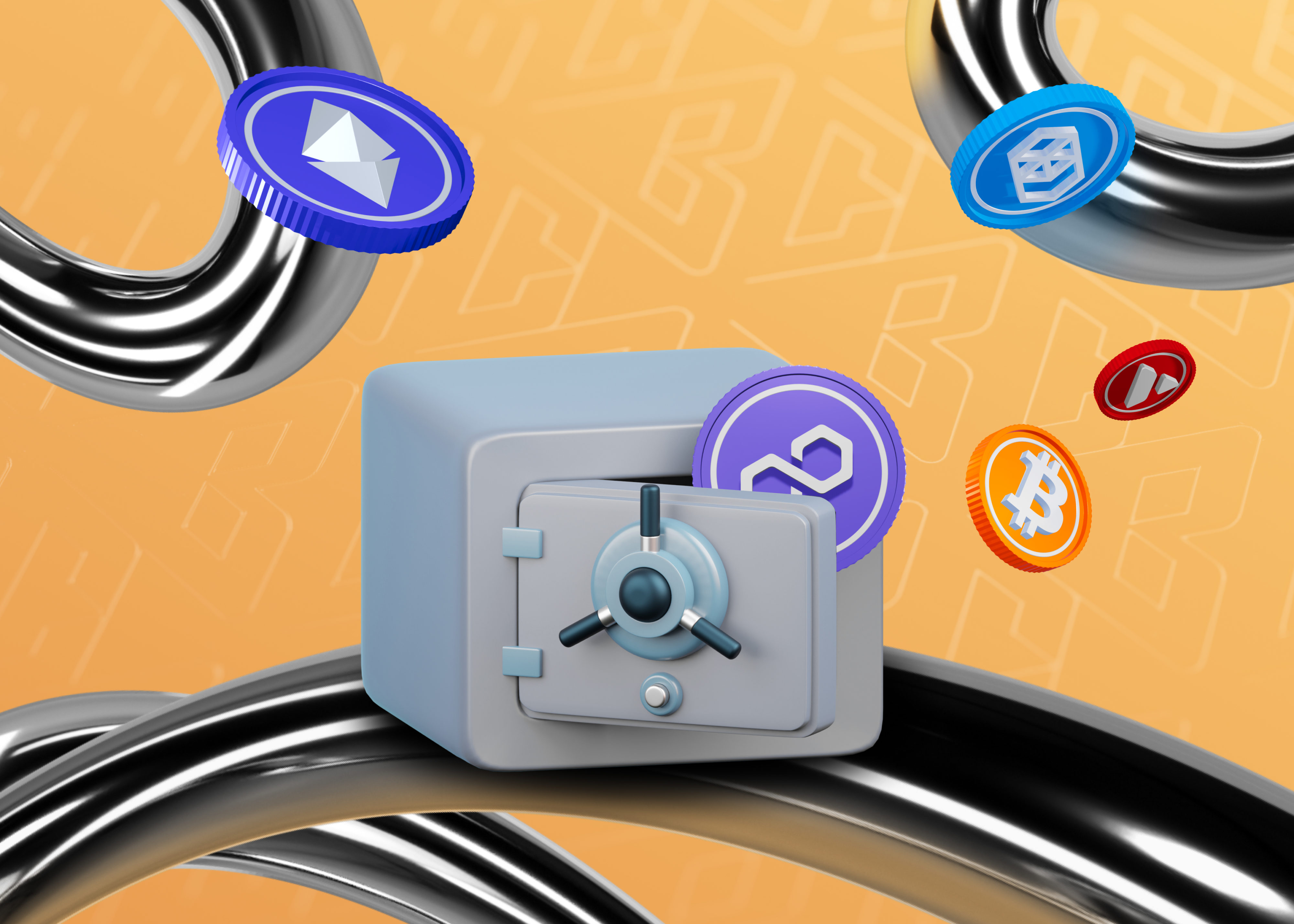How to Pay with Crypto? All About Blockchain Transactions

Crypto isn’t just an investment tool for the market. It has real practical value, allowing you to transfer money to anyone without restrictions and with minimal fees.
In this article, we’ll examine crypto payments — transactions that allow users to transfer crypto using blockchain technology.
Interestingly, the influence of crypto is growing every year, opening up new opportunities for using crypto in everyday life and expanding its application beyond its ecosystem.
How Crypto Transactions Work
A simple idea at the core of a crypto payment is transferring crypto between two wallets. All you need to know for a manual transfer is the recipient’s wallet address. However, in practice, this process can be complex for newcomers. Due to the irreversibility of blockchain transactions, an investor can’t correct their mistake.
When you make a transfer, the following happens:
- Initiating the transaction: You specify the recipient’s address and the transfer amount in your crypto wallet.
- Signing the transaction: The transaction is signed with your private key. It is a unique code that confirms you initiated this transaction.
- Information propagation: Information about the transaction spreads across the network. It enters the “mempool” — an area where all unconfirmed transactions are stored.
- Verification: Miners (in the case of Bitcoin) or validators (in the case of many other crypto) verify the transaction. They ensure the sender has sufficient funds and that the transaction complies with network rules.
- Inclusion in a block: The transaction is included in a new block after verification. This process can take different amounts of time depending on network congestion and the fee you’re willing to pay.
- Confirmation: The block is added to the chain, and the transaction is confirmed. Usually, it’s recommended to wait for several confirmations for complete certainty (for example, in the Bitcoin network, people often wait for six confirmations).
Now, let’s look at the main ways to transfer crypto: to another address (another person), through a bot, and an intermediary.
Transferring Crypto to Another Address
Let’s look at how to transfer crypto to another person. You’ll need:
- A crypto wallet: This can be a program on your computer, a mobile app, a browser extension, an exchange, or a hardware wallet. We’ll discuss wallets in more detail in the following article.
- The recipient’s wallet address: This is a unique string of characters. For example, a Bitcoin network address looks something like this: 1BvBMSEYstWetqTFn5Au4m4GFg7xJaNVN2.
- Sufficient crypto: Besides the transfer amount, you’ll need crypto to pay the network fee.
Steps to make a transfer:
- Log into your crypto wallet using a password or other authentication method.
- Choose the “Send” or “Transfer” option: Usually, this function is indicated by a corresponding button or is in the main menu.
- Enter the recipient’s address: This is the most important step. Double-checking the address is crucial, as a mistake can lead to irreversible loss of funds. Some wallets allow you to scan the address’s QR code, reducing the risk of error.
- Specify the transfer amount: Enter the amount of crypto you want to send. Many wallets also show the equivalent in fiat currency (for example, in US dollars).
- Check the transaction fee: You can choose the fee amount, depending on the network. A higher fee usually means faster transaction confirmation.
- Confirm the sending: Carefully check all details before final confirmation. Some wallets may request additional confirmation (for example, entering a PIN code).
After sending, you’ll need to wait for the transaction to be confirmed on the network. Depending on the chosen crypto and network congestion, the waiting time can vary from a few seconds to several hours.
Payment via Bot
Automated payment systems, known as bots, are often used in crypto. They’re trendy in Messenger (Telegram) and on various trading platforms. The payment process through a bot usually looks like this:
- Selecting a product or service: You interact with the bot, choosing the product or service you need.
- Address generation: The bot creates a unique address for payment. It is essential as it allows the system to track your specific payment.
- Specifying the amount: The bot communicates the amount to be transferred. Often, it’s specified in several decimal places.
- Transferring funds: You send the specified amount to the provided address using your crypto wallet.
- Automatic verification: The bot constantly monitors the specified address and automatically records the receipt of funds.
- Confirmation and delivery: After the transaction is confirmed on the blockchain, the bot marks the payment as successful and provides access to the purchased product or service.
Important to remember:
- Always check the reputation of the service using bots for payment.
- Never send more funds than the bot specifies.
- Keep all messages and confirmations from the bot in case of disputes.
Payment Through an Intermediary
Using the services of an intermediary or escrow service is a way to secure transactions in the world of crypto, especially when it comes to large amounts or transactions between strangers. Here’s how it works:
- Agreement on terms: You and the other party (seller or buyer) agree on all the transaction details.
- Choosing an intermediary: A reliable escrow service is chosen. It can be a specialized platform or a trusted person in the community.
- Transferring funds to the intermediary: The buyer transfers the agreed amount of crypto to the intermediary’s address.
- Confirmation of receipt: The intermediary confirms receipt of funds to both parties.
- Fulfillment of transaction conditions: The seller sends the goods or provides the service to the buyer.
- Confirmation of receipt: The buyer confirms receipt of the goods or service and their compliance with the agreements.
- Completion of the transaction: The intermediary transfers the funds to the seller. In case of a dispute, the intermediary can resolve it by pre-agreed rules.
Advantages of using an intermediary:
- Reduced fraud risks for both parties.
- Possibility of dispute resolution by a third party.
- Increased trust between transaction participants.
However, it’s worth noting that intermediary services are usually paid and can increase the overall cost of the transaction.
Advantages of Crypto Transactions
Payments in crypto, primarily through exceptional services, have several advantages:
- Global use: All crypto is available worldwide, which is convenient for international transfers.
- Speed and savings: Transactions are fast, especially within the same service. Even non-instant transfers are usually quicker and cheaper than bank transfers.
- Anonymity: When transferring crypto, you don’t need to disclose your data or the recipient’s data.
Cheeseburger for Bitcoin: Can You Pay with Crypto in the Real World?
Crypto is gradually spreading around the world as a means of payment. Although its use depends on the laws of each country, there are already several countries in the world where you can officially pay with cryptocurrency for goods or services:
- El Salvador became the first country to declare Bitcoin an official means of payment, and schoolchildren in El Salvador are taught how to use crypto in classes!
- In Japan, many shops and restaurants accept crypto.
- In the Swiss city of Zug, you can pay taxes and other government services with Bitcoin. And in Switzerland, you can even pay with crypto at McDonald’s!
- In the capital of Slovenia, there’s Bitcoin Street, which has many establishments accepting crypto.
- Ferrari has started accepting payments in Bitcoin, Ethereum, and USDC. You can now buy a car with crypto in the US and Europe!
These are just a few examples of the spread of crypto in the real world. Every year, the mass adoption of crypto becomes an increasingly relevant topic, and more companies are making crypto a means of payment for tangible goods and services.
Now You Understand How to Transfer Crypto
Crypto payments are gaining popularity as they have advantages over traditional methods. Despite some drawbacks, this technology continues to develop and has the potential for widespread adoption. Shortly, we can expect improvements in transaction speed, increased acceptance among sellers, development of the regulatory framework, integration with traditional financial systems, and much more.
As we can see, crypto payments can be made in various ways, each with its features and application areas. Regardless of the chosen method, it’s essential always to follow these rules:
- Always double-check addresses and amounts before sending.
- Use only reliable wallets and services.
- Monitor transaction fees; they vary significantly depending on network congestion.
- Some transactions may take time to confirm, especially during periods of high network activity.
- The crypto industry is constantly evolving, so updating your knowledge is essential.
Despite seeming complex, paying with crypto becomes simple and convenient with practice. The main thing is not to be afraid to try and gradually master new technologies. Crypto opens up new possibilities for fast, secure, and global payments, and understanding the principles of their operation is becoming an increasingly important skill in the modern world.
Stay with Banana Education to receive new knowledge about crypto regularly!





 Joining Us?
Joining Us?